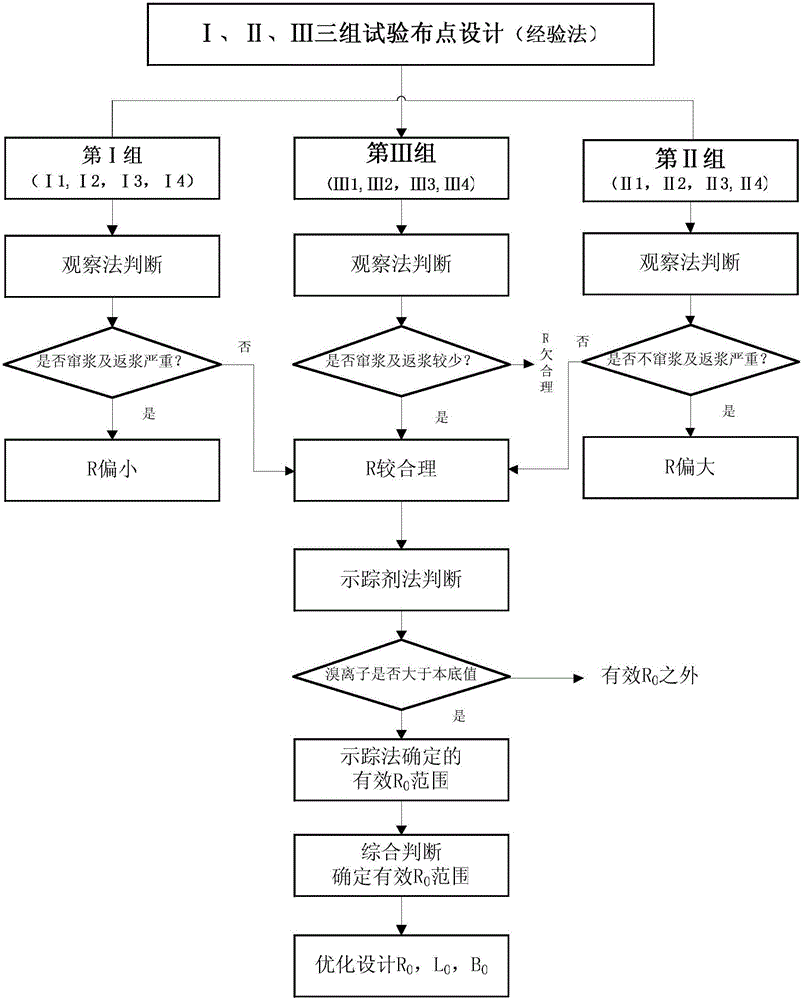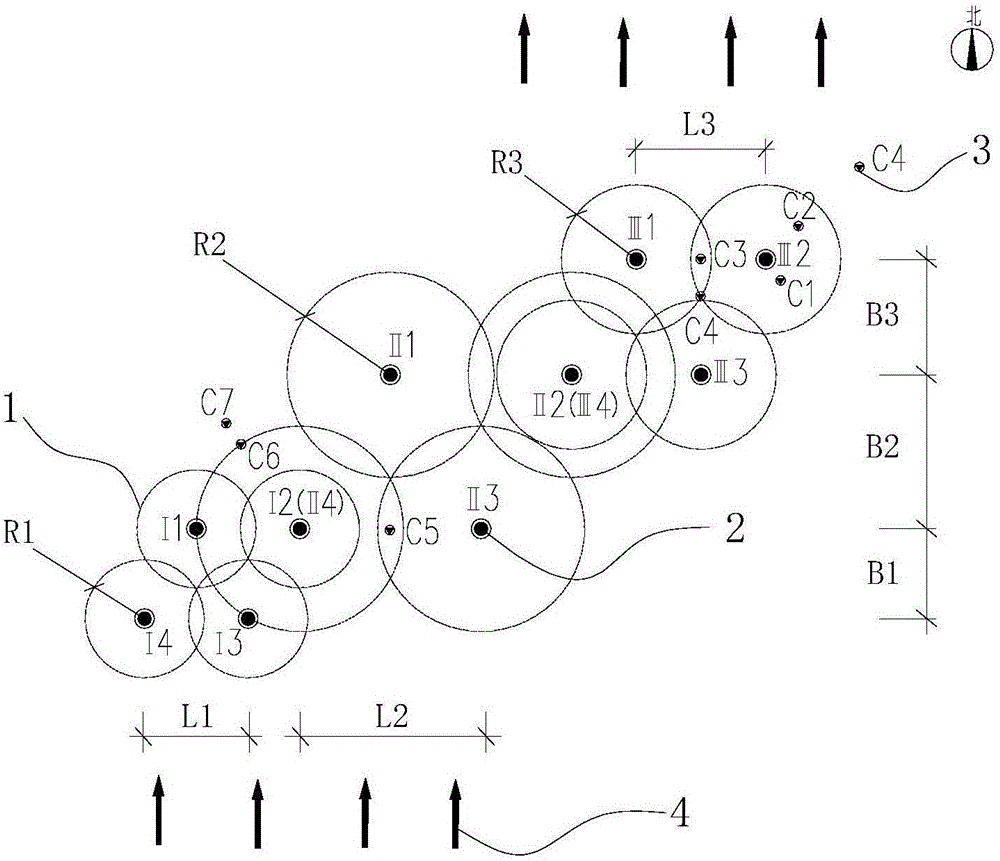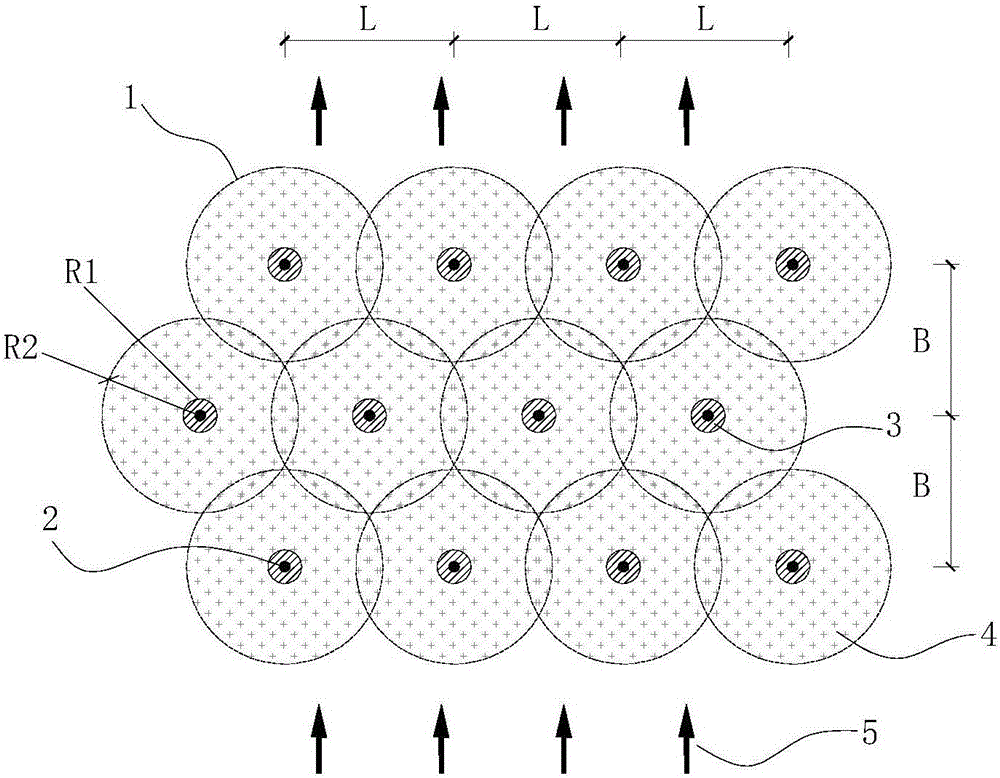Method for determining in situ injection repair diffusion radiuses of contaminated soil and underground water
A technology of diffusion radius and polluted soil, applied in the restoration of polluted soil, diffusion analysis, earthwork drilling, etc. It can solve the problem of determining the effective diffusion radius of the agent and optimizing the parameters of the hole layout, not considering the effect of the agent diffusion, and waste of mechanical costs. and other problems, to achieve the effect of convenient and fast testing, saving test time and cost, and ensuring accuracy and difference analysis.
- Summary
- Abstract
- Description
- Claims
- Application Information
AI Technical Summary
Problems solved by technology
Method used
Image
Examples
Embodiment 1
[0079] This embodiment is a field test method for determining the effective diffusion radius of the agent in the restoration of organically polluted soil and groundwater restoration projects using the in-situ chemical oxidation in-situ injection method. There are no operations specifically described in this embodiment, which have been given in reference to the content of the invention. method is carried out.
[0080] This project is a soil and groundwater remediation project for a chemical plant in Nanjing. The maximum soil remediation depth is 12m. There are two layers of silty clay layers, and the aquifer is a silty sand layer (distributed at 3-6m or 4-7m). The buried groundwater is shallow ( about 1m) and abundant. The target pollutants in soil and groundwater are VOCs / SVOCs organic compounds such as chlorobenzene, benzene, p / o-nitrochlorobenzene, etc. One of the difficulties in in-situ restoration of this project is the lack of practical experience and design basis in Chi...
Embodiment 2
[0098] Such as image 3 , Figure 4 As shown, this embodiment is the optimization process of soil and groundwater in-situ injection repair hole layout parameters. It is based on the groundwater flow in the repair site, the difference in soil layer permeability, and the effectiveness of the repair agent under the condition that the effective diffusion radius is obtained in Example 1. The process of optimizing hole layout parameters based on factors such as reaction time. A brief description is as follows:
[0099] Obtained the recommended value of effective diffusion radius of two kinds of typical soil layers among the embodiment 1, the R of sandy soil class (as silty fine sand aquifer) is 2.9m, the R of clay class (as silty clay) 0 It is 0.9m. The triangular method is adopted for the hole layout method, and the hole layout method 1 is adopted for the sandy soil, considering the influence of groundwater flow on the row spacing of the hole layout parameters, and the row spaci...
PUM
 Login to View More
Login to View More Abstract
Description
Claims
Application Information
 Login to View More
Login to View More - Generate Ideas
- Intellectual Property
- Life Sciences
- Materials
- Tech Scout
- Unparalleled Data Quality
- Higher Quality Content
- 60% Fewer Hallucinations
Browse by: Latest US Patents, China's latest patents, Technical Efficacy Thesaurus, Application Domain, Technology Topic, Popular Technical Reports.
© 2025 PatSnap. All rights reserved.Legal|Privacy policy|Modern Slavery Act Transparency Statement|Sitemap|About US| Contact US: help@patsnap.com



